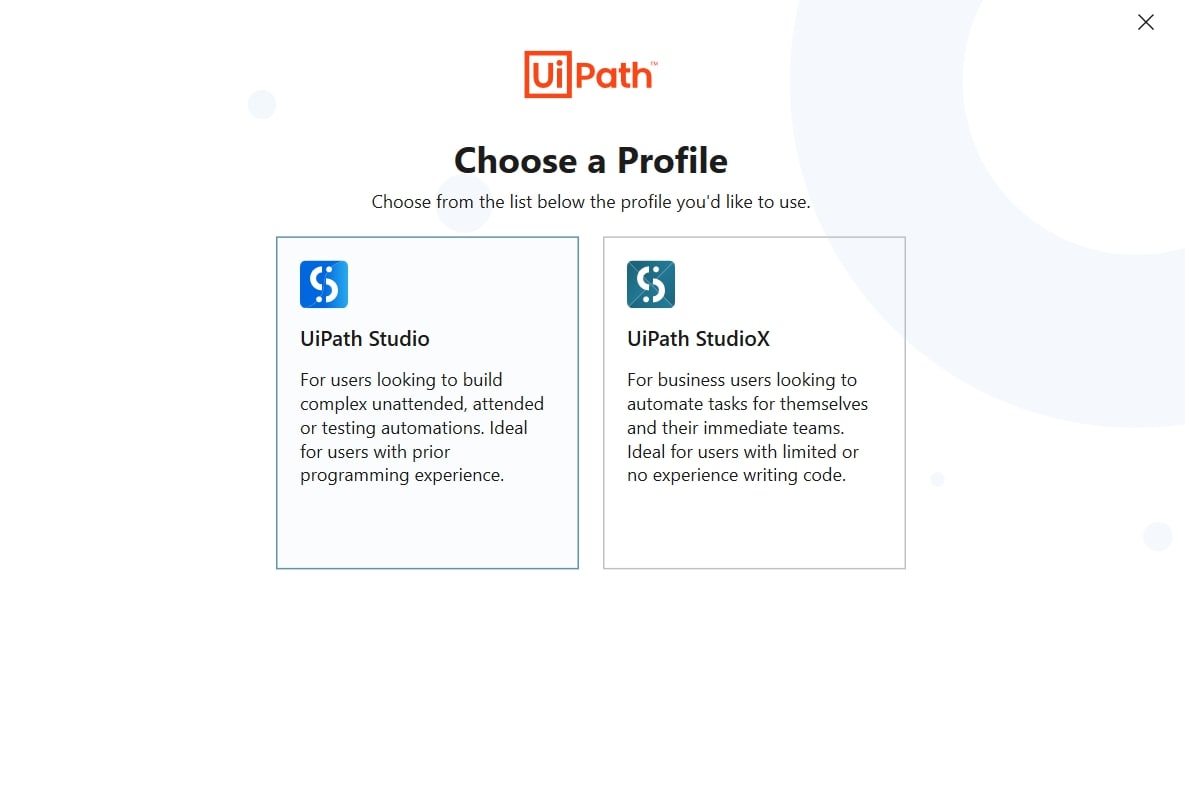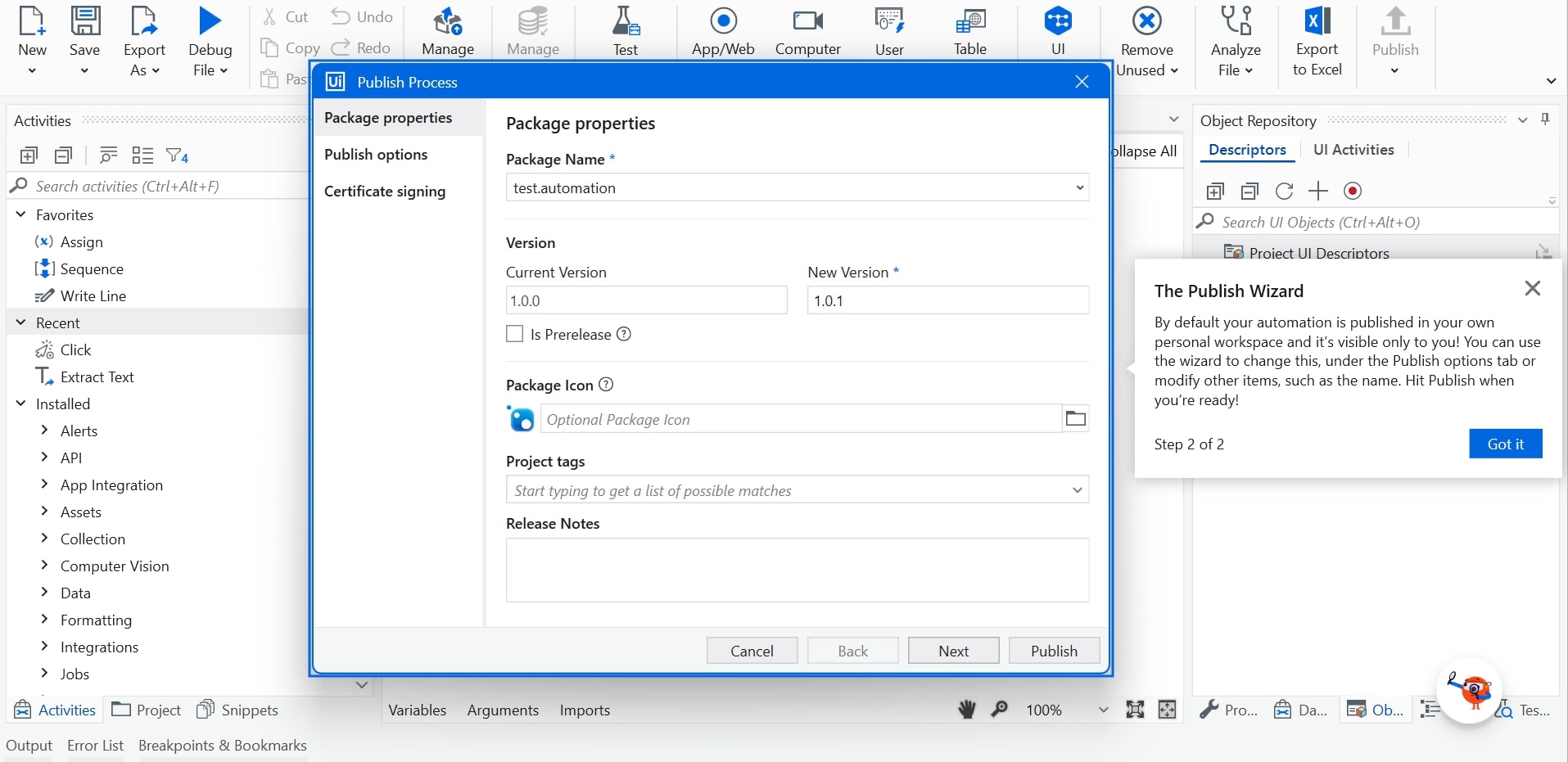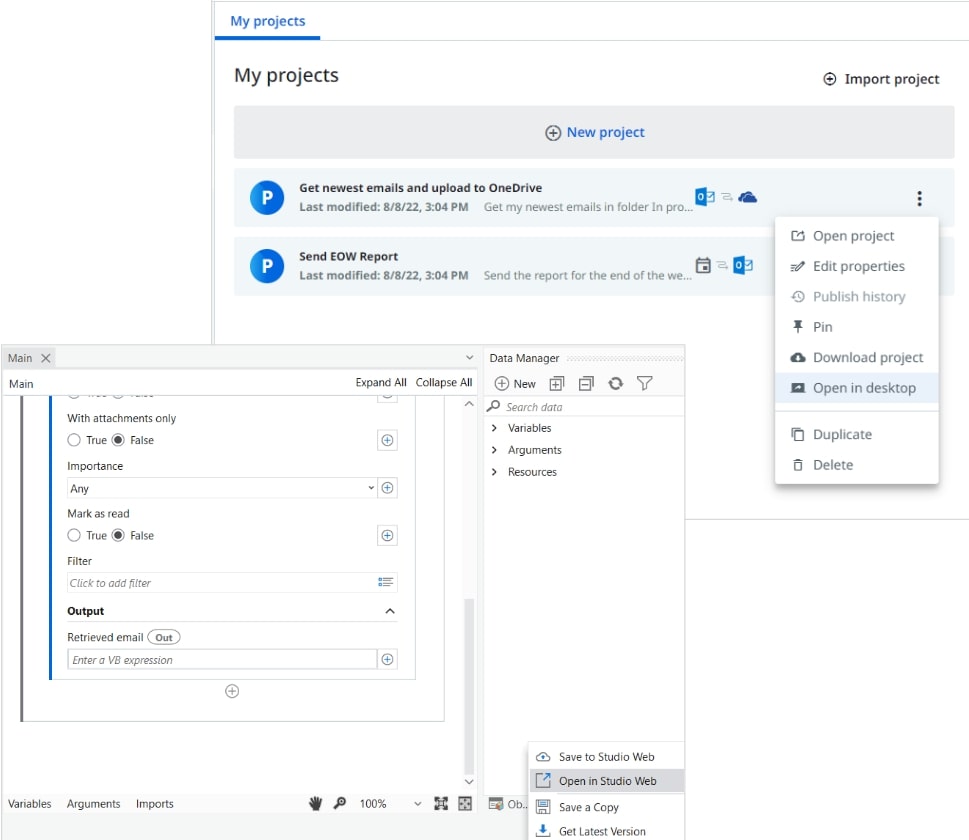UiPath Studio product family: choosing the right automation tool (Community blog)
UiPath Studio product family: choosing the right automation tool
Share at:

Introduction
Our product categories are prospering thanks to three main pillars called discover, automate, and operate. The automate segment relies on a dynamic trio that's not talked about enough. This dynamic trio consists of two desktop products: StudioX and Studio, and their younger sibling Studio Web. We call them UiPath Studio product family.
You might be wondering which Studio is best for your automation needs. The good news is, you're not limited to just one! And, each Studio product complements the others, giving you the flexibility to switch between them depending on what you need to automate. Let's take a closer look at each member of the Studio product family and explore how they can enhance your automation journey.

UiPath Studio Web
The youngest member of the family is UiPath Studio Web. We call it your starting point in your automation journey. Studio Web is browser-based and has all the fundamentals you need to learn. You can easily build web automation through API-triggered scenarios and web-based UI Automation. The greatest thing about Studio Web is that it’s available at no cost for all UiPath Automation Cloud users. Plus, it doesn’t require any installation and has no IT dependencies!
Studio Web serves as an entry point for users, requiring no prior programming knowledge to get started. Meanwhile, it still offers numerous features and functionalities that programmers will appreciate. Studio Web covers a range of online business applications and services like Microsoft365, Google Workspace, and Salesforce, among others. Additionally, Studio Web seamlessly integrates with UiPath Document Understanding, Process Mining, and Communications Mining.
While Studio Web isn’t made for simple automations, it does make automation simpler. You can easily launch it on the operating system of your choice—whether it's Windows, Mac, or Linux. Despite being just one year old, Studio Web is a powerful tool that has lots of cool updates on the horizon. To begin using Studio Web, visit here.

UiPath StudioX
The next member of our list is UiPath StudioX. This is a desktop variant that uses simplified UI automation for desktop applications. StudioX is a desktop automation tool that empowers users to automate their tasks without requiring a vast coding knowledge. It integrates various business applications such as MS Office, Google Workspace, SAP, and UiPath Integration Service.
StudioX gives you the ability to build attended workflows. Through its simplified interface and Automation Ops, it offers better control and governance over your desktop automation for the center of excellence (CoE). These CoE options benefit the control and training for beginners. You may set a guardrail according to the user’s level of experience with automation.

StudioX provides templates, wizards, and a library of prebuilt activities to simplify the assemblance of a workflow. Like other UiPath products, StudioX offers debugging and testing capabilities, allowing users to identify and fix errors in their desktop automation workflows. Once you publish your desktop automation, you can easily run and schedule it through UiPath Assistant.
Explore more information about StudioX
UiPath Studio
The head of our Studio product family would be, of course, UiPath Studio. Not just the oldest member, but also the most advanced automation software, Studio has it all. Multiple file support, advanced debugging and troubleshooting, and advanced UI Automation are just some of the features of Studio.
As an advanced automation software, Studio offers multiple workflow recorders, wizards, and selectors. Studio is integrated with UiPath Document Understanding allowing you to automate any desktop or web application. With Studio, you can design complex automation for flowcharts, sequences, state machines, and multi-file processes. Additionally, Studio is equipped with coded automation that allows you to create workflows or test cases by writing code. Finally, Studio has multiple project languages, owns Continuous integration and Continuous Delivery/Deployment (CI/CD), and offers source control options for experienced users.
With Studio, the sky is the limit. Overall, it covers a wide range of tasks. Besides built-in activities, users can also create custom ones based on their needs. Out of the three flavors of UiPath Studio, this is tailored for users with extensive technical knowledge and programming background.

Check out this UiPath Academy dedicated course for automation developers
Studio synergy: cross-platform automation
As mentioned before, the best thing about the UiPath Studio product family is that all three products work in tandem. You may use a different Studio tailored to your needs every time. Each version is cross-platform ready and supports MacOS, Linux, and Windows. Not just that, but once you start a project in Studio Web, you can continue in the desktop version of StudioX or Studio with just a few clicks.
Here’s how it works: from Studio Web, click Open on desktop on the context menu of the chosen project. Now you can continue developing in the desktop version. This works vice versa. If you start on a desktop, check the status bar as shown below, and open your project in Studio Web.

UiPath cross-platform capabilities can empower any organization to develop solutions. Whether we’re talking about web, cloud, or multi-platform, UiPath Studio product family covers them all. StudioX comes in handy for less-technical users. Meanwhile, Studio gives a platform to more-experienced users to craft complex automations. Complementing them, Studio Web passes the boundaries of traditional automation through UI automation, executing everything from a web browser. Together, the three products link up to a single goal: automate for increased productivity.
Get started with Studio full suite of products today.
Junior Product Marketing Manager, UiPath
Get articles from automation experts in your inbox
SubscribeGet articles from automation experts in your inbox
Sign up today and we'll email you the newest articles every week.
Thank you for subscribing!
Thank you for subscribing! Each week, we'll send the best automation blog posts straight to your inbox.



